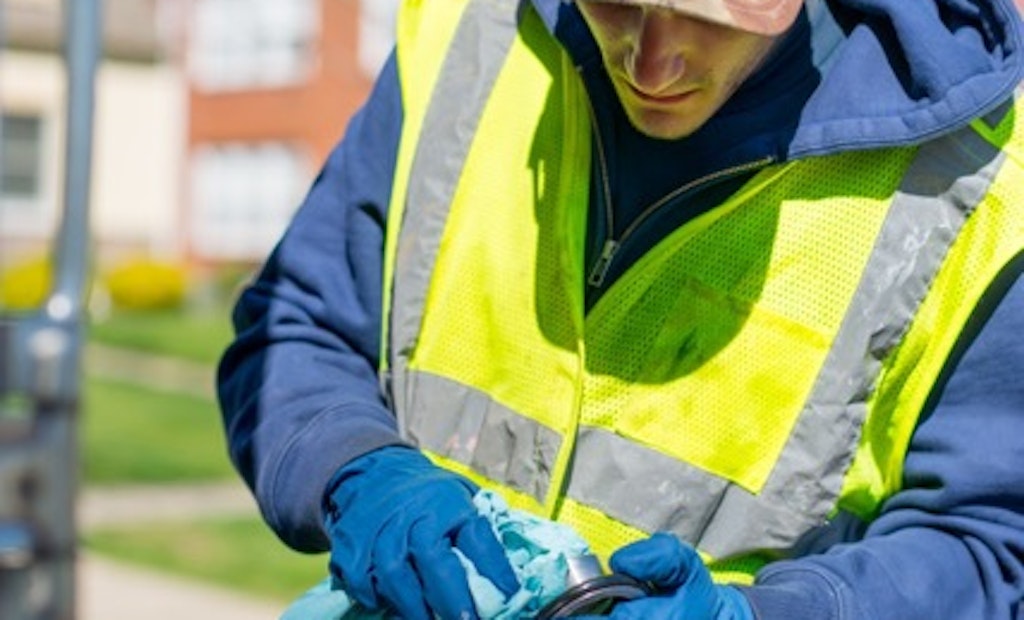Interested in Location/Detection?
Get Location/Detection articles, news and videos right in your inbox! Sign up now.
Location/Detection + Get AlertsWhether you’re a city trying to keep within budget or a contractor seeking to maximize profitability, managing cost of ownership for your CCTV inspection equipment is crucial to your success.
“Cost of ownership” can mean different things in different industries, but in the punishing world of sewer inspection it often comes down to maintenance and repair. Too often, cost-of-ownership considerations are neglected in the sales process, and addressed reactively (and at great expense) throughout a crawler’s service life.
The good news is there are simple steps you can take that will have a dramatic, positive impact on cost of ownership. Here, we’ve collected some of the major insights our customers have shared with us over the years.
1. Train your operators
Treat a crawler well and it will treat you well. Inspection crawlers invariably encounter abuse as they travel through sewers, but a few ground rules for operators can prevent the worst of it.
- Check pressure before each use. Internal pressure keeps water out of your crawler, so never deploy it without sufficient pressurization. Usually the crawler and camera are pressurized separately, so be sure to check both.
- Clean the crawler after each use. Not only is this essential for health and hygiene, it helps a crawler last longer. Caked-on debris and sediment can rot seals, corrode metal and put excessive strain on drive mechanisms.
- Don’t pull or lift a crawler by its cable. Over time, recurring strain on the cable connector can sever conductors, requiring cable retermination.
- Use a lowering device. The face and forks of a crawler camera are not designed to absorb impacts with the manhole floor, so don’t lower your crawler by its cable. Impact can cause metal deformation, ruining seals and allowing water ingress.
- Use a top manhole roller and tiger tail. This prevents abrasion to the cable and reduces pulling strain on the crawler.
- Monitor crawler roll. A roll sensor provides advanced warning when a crawler is at risk of flipping. Once a crawler flips, it has to be dragged out by its cable, and the risk of damage escalates considerably.
.jpeg) Because operation has such a huge impact on cost of ownership, any investment in operator training yields big returns. When you purchase a new crawler, make sure all operators are present for delivery training. When you hire a new operator, make sure training is equally thorough. Some owners even offer operators a “stewardship bonus,” where equipment condition and repair savings factor into a modest financial reward.
Because operation has such a huge impact on cost of ownership, any investment in operator training yields big returns. When you purchase a new crawler, make sure all operators are present for delivery training. When you hire a new operator, make sure training is equally thorough. Some owners even offer operators a “stewardship bonus,” where equipment condition and repair savings factor into a modest financial reward.
2. Keep your scheduled maintenance appointments
As the saying goes, an ounce of prevention is worth a pound of cure. This is particularly true with crawlers, where regular replacement and lubrication of seals is your best insurance against water ingress. Proper sealing allows a crawler to hold pressure, and that pressure keeps water from leaking in and destroying electronics. Seals are best changed on a regular basis, measured in months (six to eight) or operating hours (700 to 800). If your crawler requires repeated repressurization, you’re probably overdue for scheduled maintenance.
A scheduled maintenance visit is also a great opportunity for a technician to read fault codes and check other vital signs. Excessive current draw on a motor, over-temperature situations, and presence of internal humidity are all red flags that can be difficult for an operator to detect. Some crawlers automatically measure these parameters and log them or alert the user, other crawlers will require a more manual diagnostic workup. Likewise, visible wear on a connector or cable is much more affordable to remedy during a routine maintenance visit than waiting for failure and incurring the associated downtime, collateral damage and shipping costs.
As with personal health care, routine preventive maintenance for your crawler is critical to ensuring its longevity, the quality of its performance, and the extent of service it requires as it ages. Preventive maintenance is probably the single most important thing you can do to lower crawler cost of ownership.
3. Invest in an overhaul
Beyond sealing and other scheduled maintenance, there are crawler components that wear at a slower rate, but whose replacement can extend the service life of a crawler and revitalize its performance for a cost substantially lower than the amortized cost of a new crawler. Such an overhaul typically includes replacement of:
- Side plates, the deformation of which over time may allow water ingress
- Wheel axles, which may become worn to the point where new seals do not do their job
- Internal connectors, which can become increasingly susceptible to vibration-induced failure over time
- Idler gears, to complement the new gearing on the replaced axles
- Seal discs and articulation axles, which help maintain pressure as the camera tilts
- Windows, which can become scratched and cloudy over time
The return on investment for an overhaul is threefold: it heads off additional, costlier repairs; it improves inspection performance and productivity; and it further extends service life. The suggested interval for overhauls is typically 18 to 24 months or 1,800 to 2,500 operating hours.
The three secrets presented above are from the white paper “7 Secrets to Low Cost of Ownership For Sewer Crawlers.” To read the rest of the secrets to controlling crawler cost of ownership download the white paper here.






